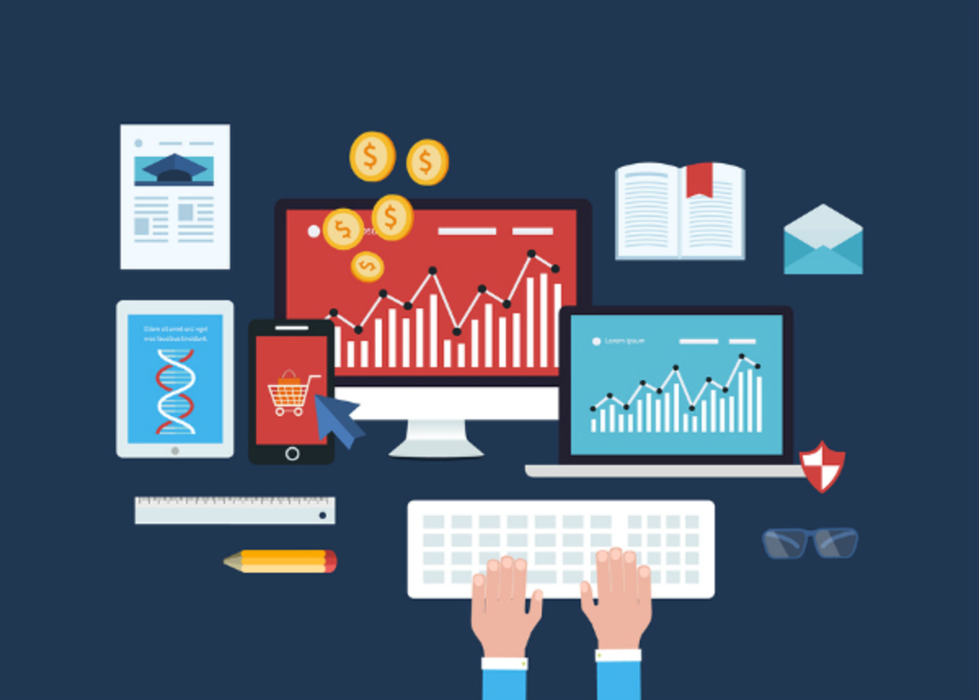People used to say that money made the world go ’round, and that’s still mostly the case. But for marketers, the world runs on four letters (d-a-t-a) that are often arranged in binary code.
These days, customer data is about as ubiquitous as air or water. With the right technology in place, marketers can know most everything about shoppers, and those who they want to become customers. As a result, consumer culture has shifted, marketers have adapted, and they continue to experiment in an attempt to leverage thousands of gigabytes of data. But as that customer data continues to grow so too does the catch-22 nature of that data.
“Before the age of the Internet and smartphones, marketing was arguably simpler,” says Gordon Evans, VP of product marketing at Salesforce Marketing Cloud. “There were a limited number of mainly mass-market media channels, where brands could talk at customers with campaigns, but had little ability to be able to listen to what customers were saying back to them and truly engage them on a personal level.”
This breadth of data makes deep personalization a reality, but many marketers are still working to keep up with customer wants, habits, and information. “Customer data is increasing in type, complexity, diversity, velocity, and interdependence. The result is today’s marketing challenge: Adapt to new ways customers are buying and interacting with brands, sometimes simultaneously, across devices, marketing channels, and in-store,” says Nayda Kohl, SVP of business development at marketing technology company PlaceIQ.
Before exploring these new and creative data sets that enable the deep personalization that customers are growing to expect, marketers must first establish a baseline of data to extrapolate on.
“I would group [baseline] data into three categories: purchase history—the data about what really makes you money; acquisition channels—where the customer is coming from and what channels they used; and engagement data—data about how people are interacting with whatever assets and products that you’re putting in front of them,” says Bob Moore, cofounder of analytics platform RJMetrics. “The [engagement data] universe is absolutely enormous.”
It’s through engagement data that marketers can truly leverage big data and deliver on the omnichannel promise. “With this specialized data, it’s hard to say if there’s a one size fits all. It depends on the marketer and [his] business,” says Kyle Antoian, VP of business development and online solutions at Epsilon. “This type of data helps me understand how my customers interact in my particular vertical. It’s specific data that’s only relevant to me as a particular marketer.”
With this data, marketers can accomplish a few things, each that leads to a holistic view of customers:
Track content interactions
Given the highly contextual nature of these specific engagement data points, marketers should prioritize customers’ interaction with their brand and its content in as granular a sense as possible.
“With the appropriate facets and tagged content, you can assess all the various interactions that a consumer has with a multitude of content elements, and optimize the delivery of future content to be more relevant,” says Patricia Lyle, SVP and general manager of analytics at marketing agency MXM.
Mix data to truly maximize data
Humans are incredibly complex individuals, with varied and nuanced habits, interests, and views. No single data set can capture all of this complexity. So, marketers should optimize their data by mixing and molding data sets into that single view. “It’s important to note that no data set used in isolation is a magic bullet. For this reason, marketers need a better understanding of how to best marry sometimes previously existing data sets with new ones in a way that optimizes a customer-related outcome,” PlaceIQ’s Kohl says.
Additionally, marketers must maintain lucidity around their key performance indicators. “Always stay focused with the top five KPIs… [T]his will allow you to stay focused on established goals and not drown in the ocean of data,” says Jessica Langdorf, VP of solutions planning, analytics, and optimization at engagement solutions provider TouchCommerce.
Focus on the big picture
Data is at least as complex as the customers who leave it trailing in their wake. Marketers can use data to great effect as they optimize marketing communications and create new customer segments, and, of course, remain focused on the customer.
“Regardless of the new type of data set being utilized, the end goal is the same: making the customer happy,” Evans says.







